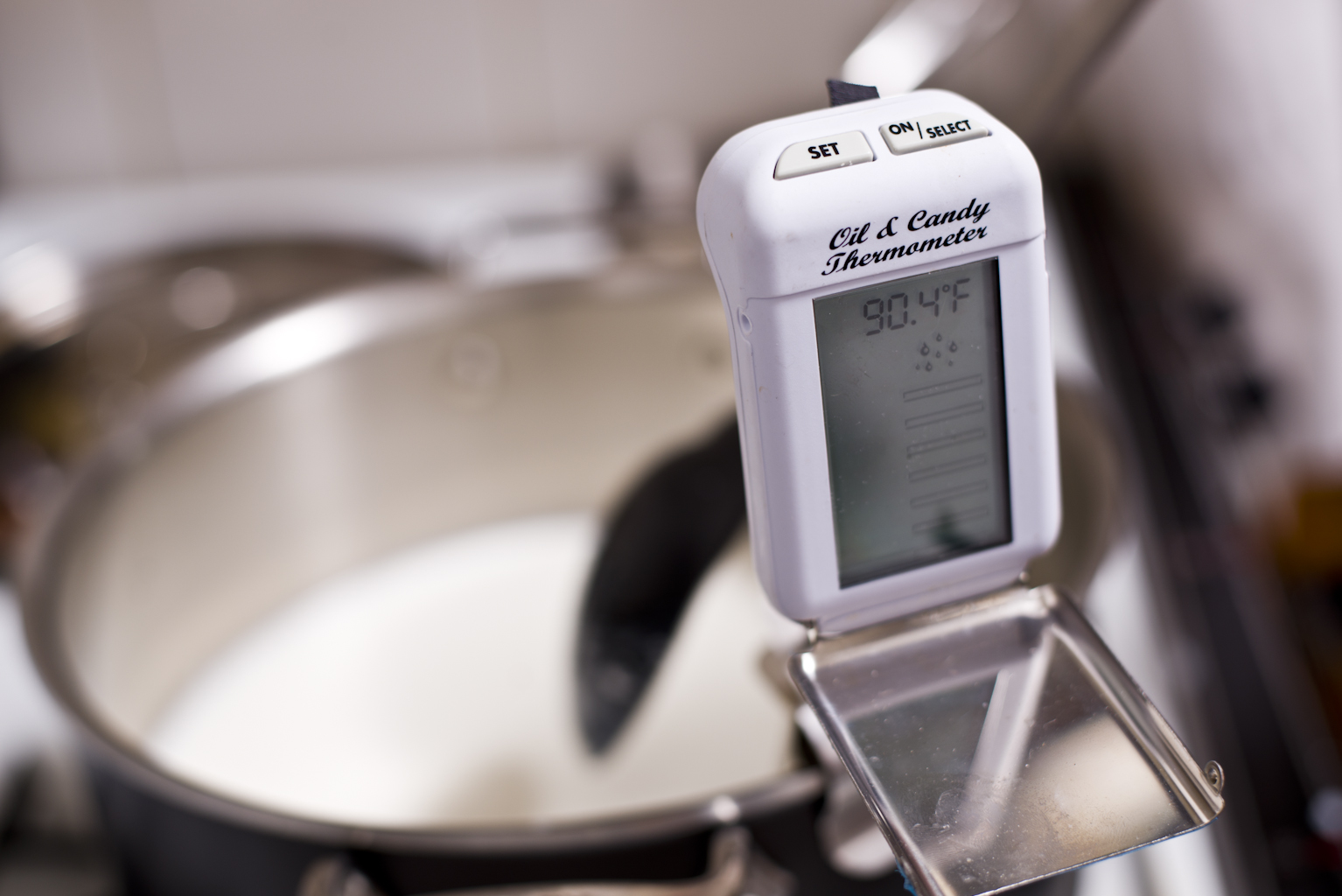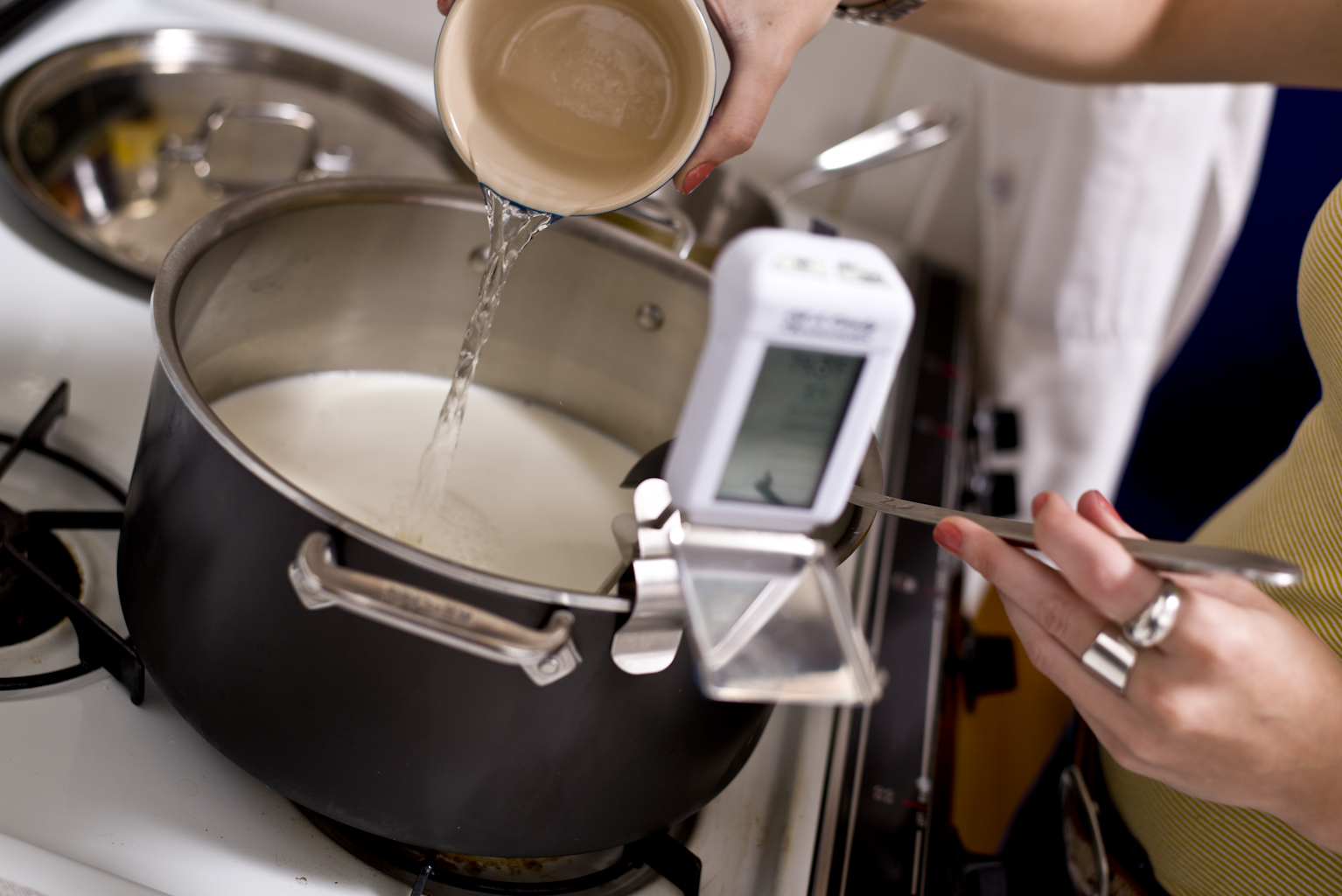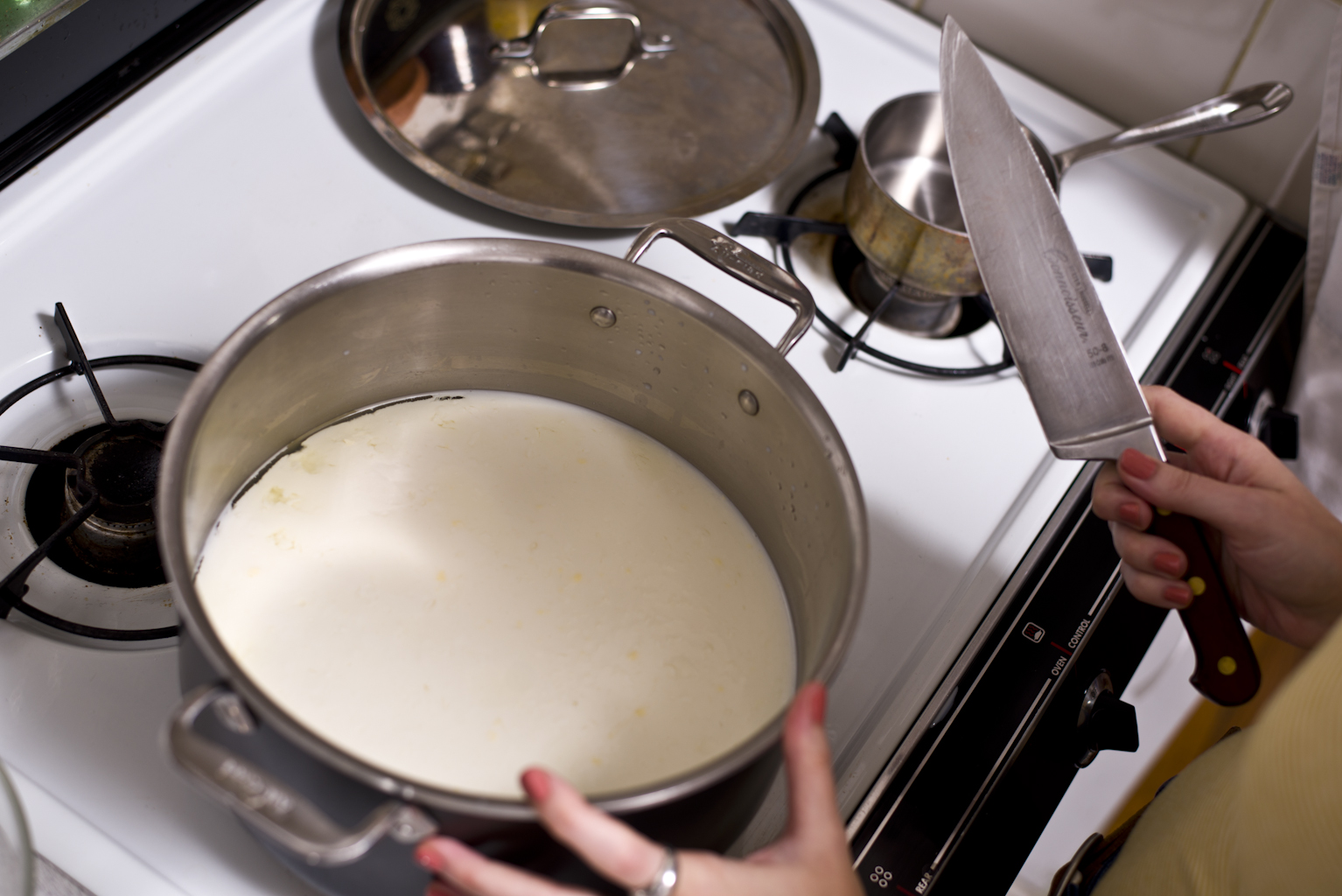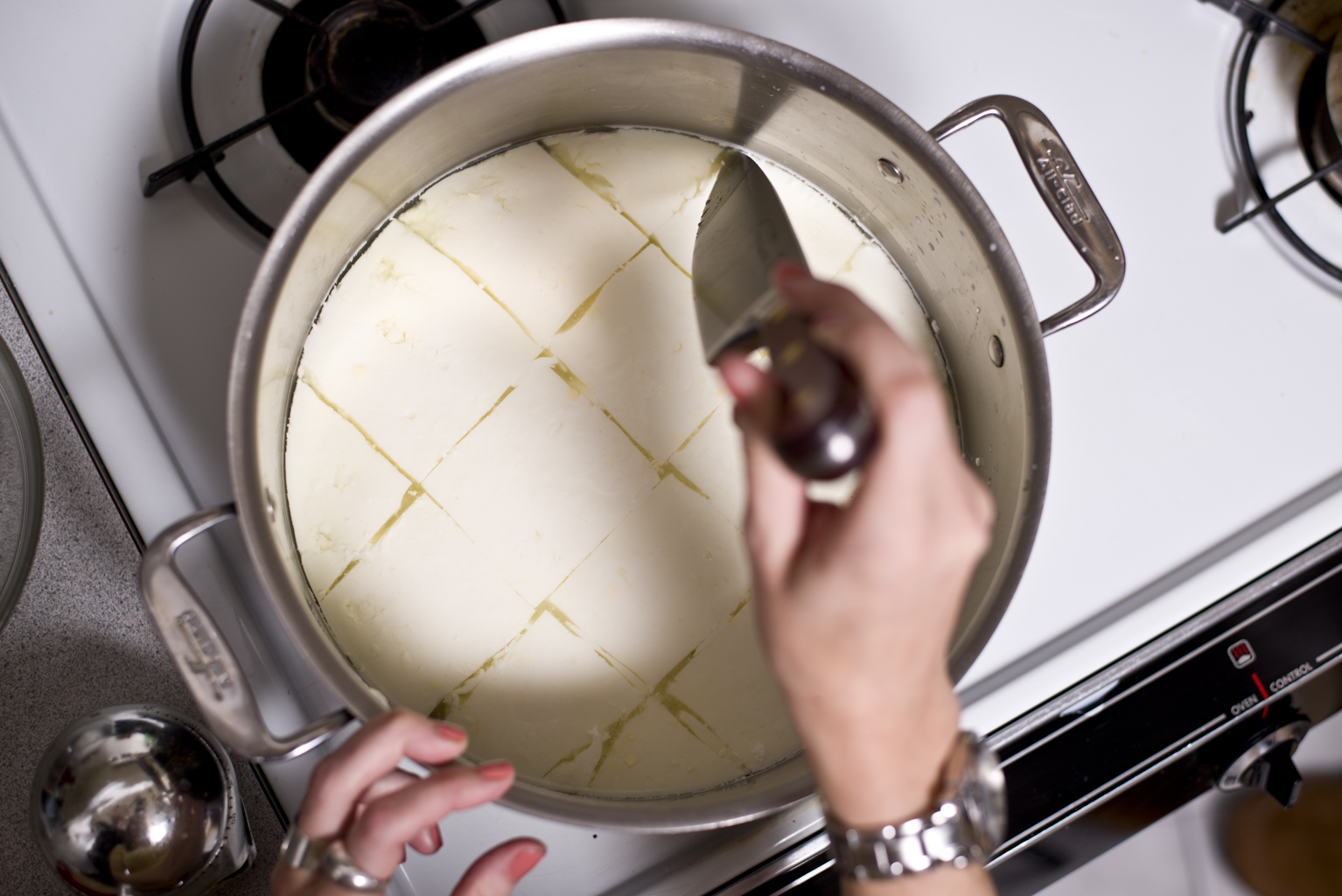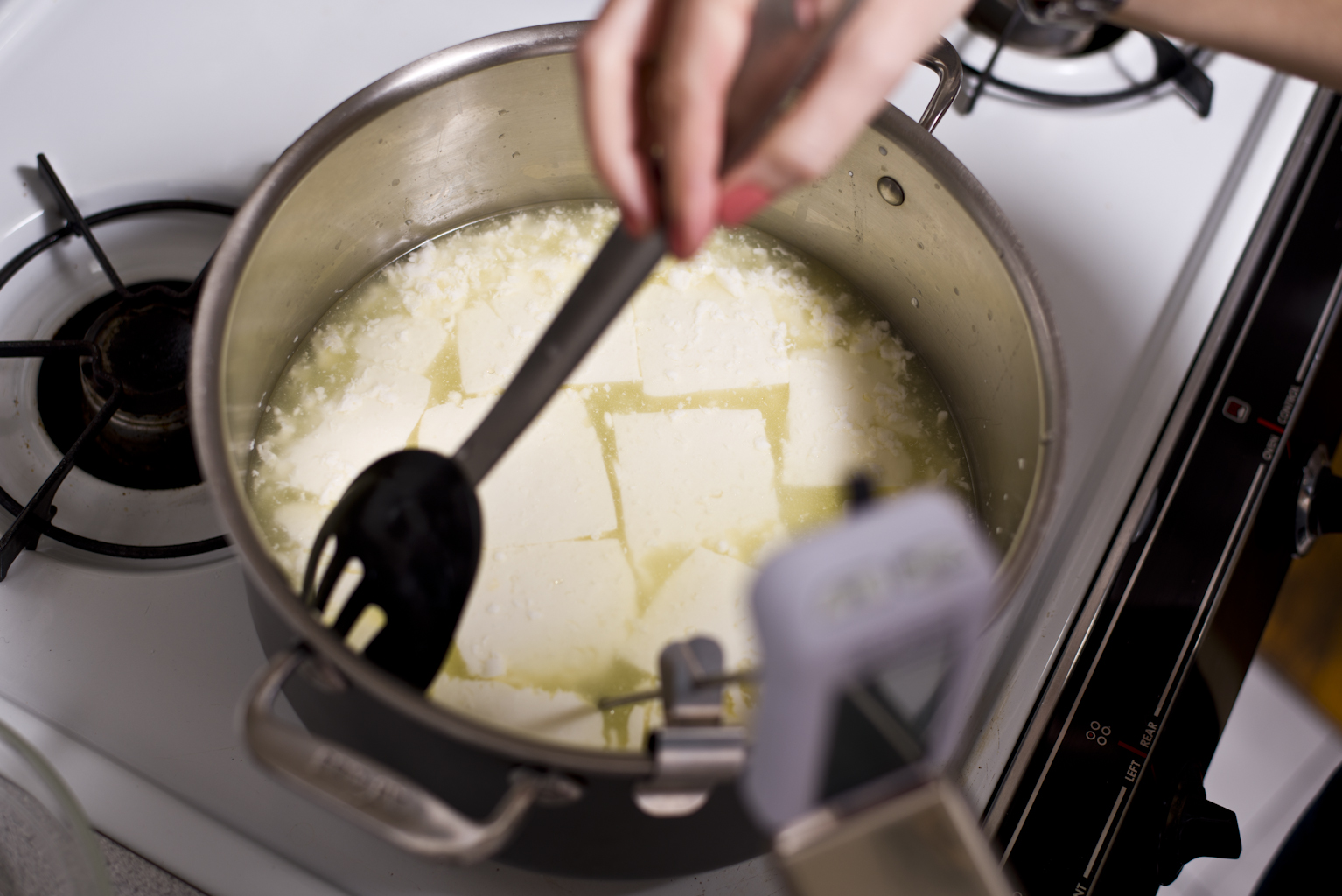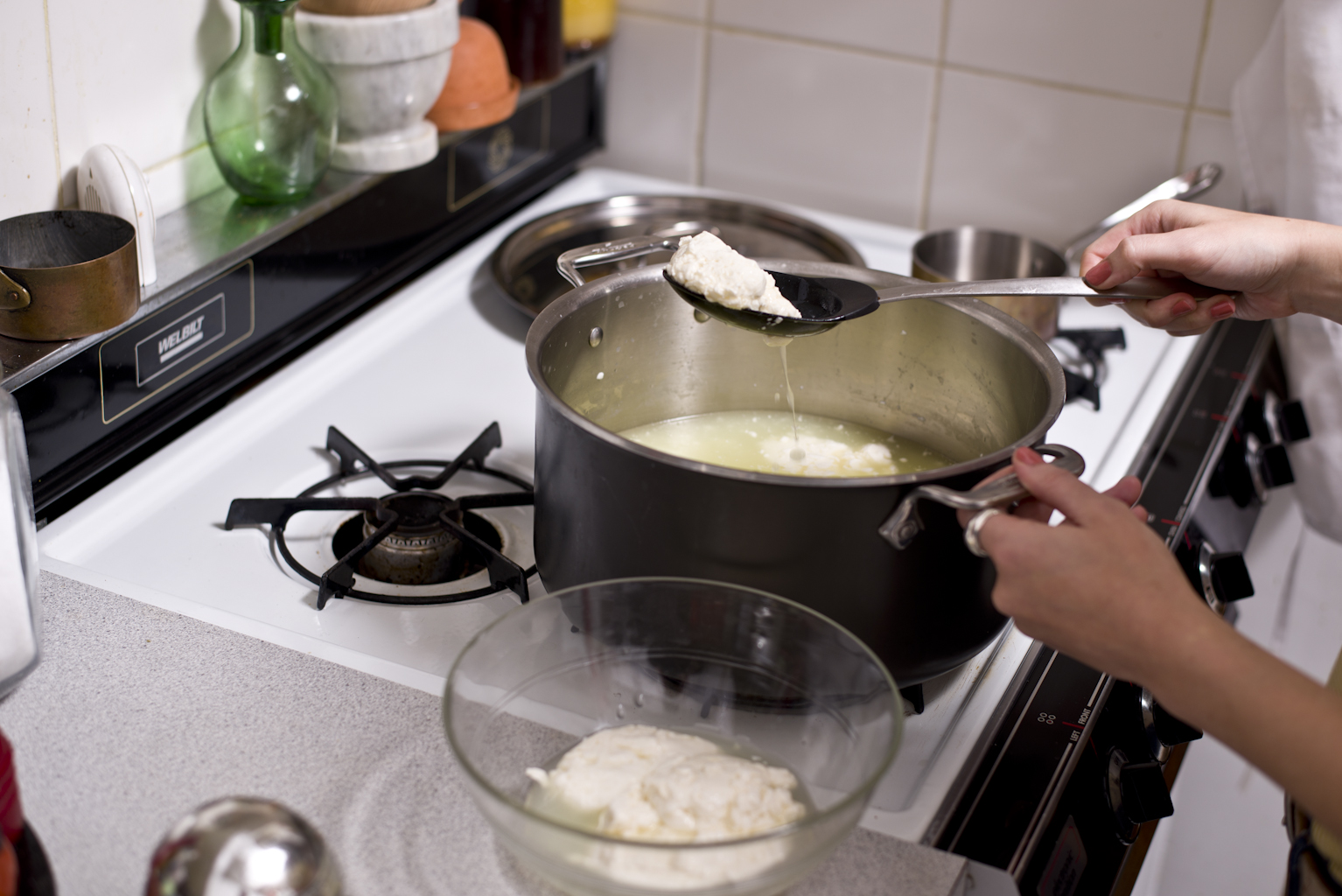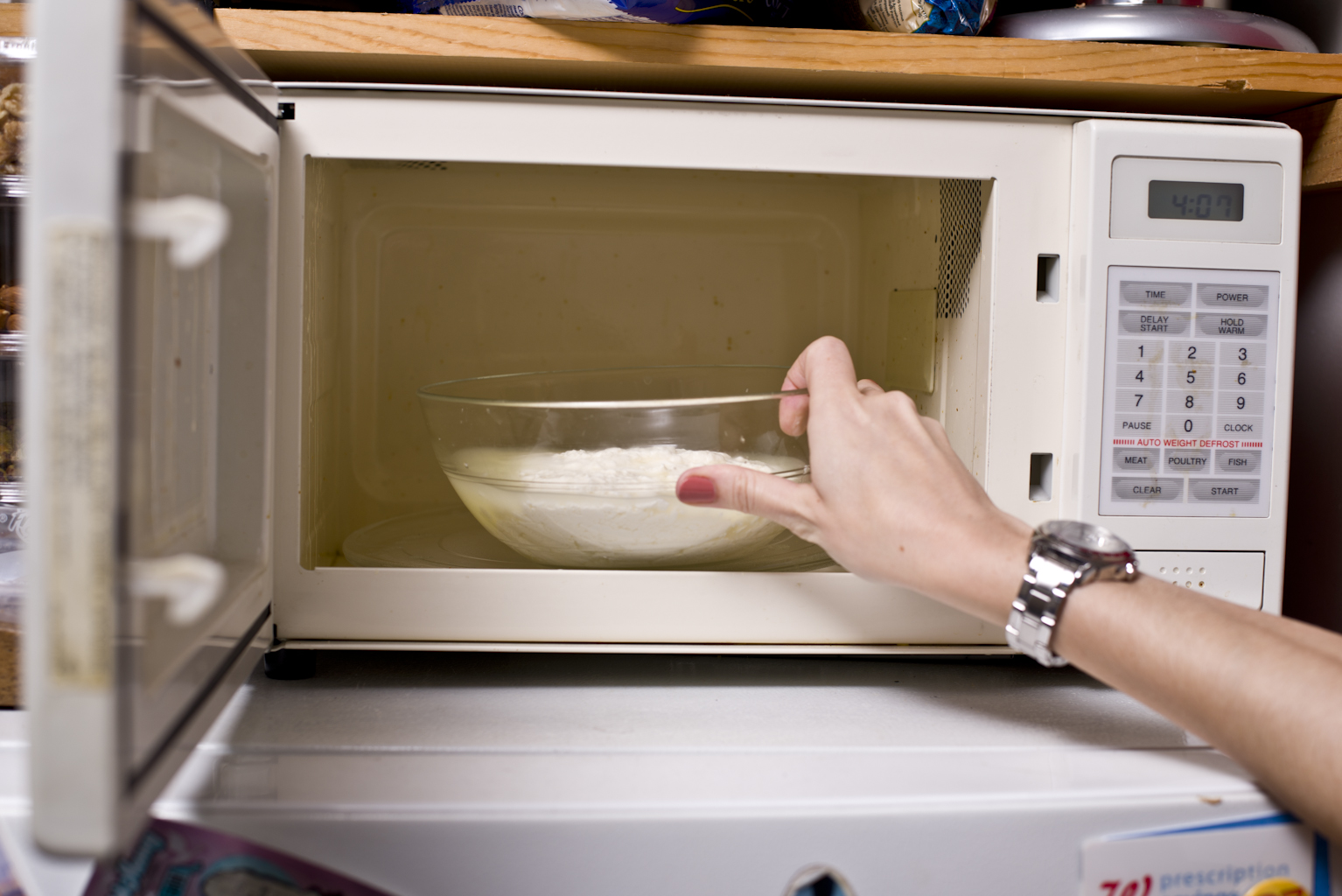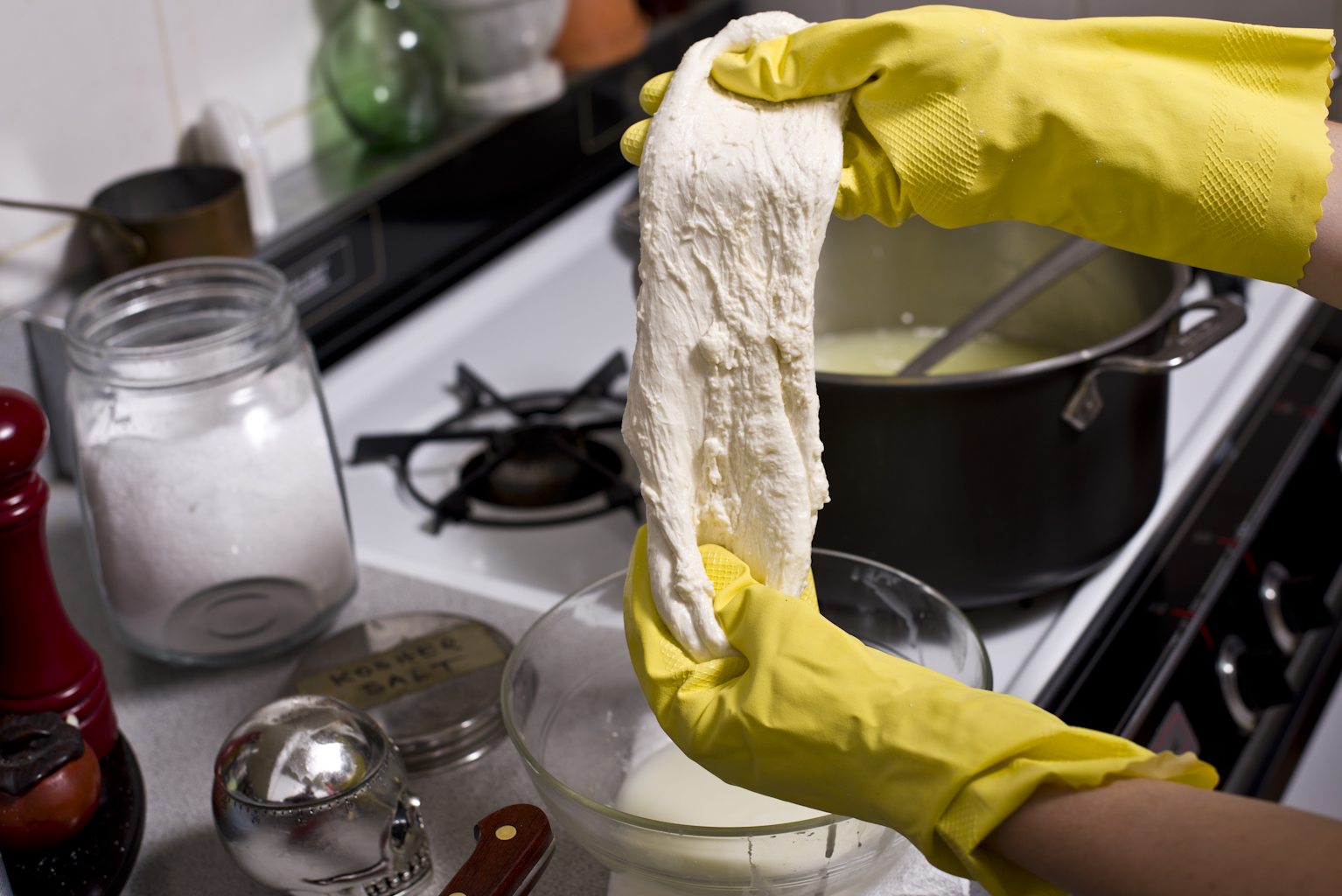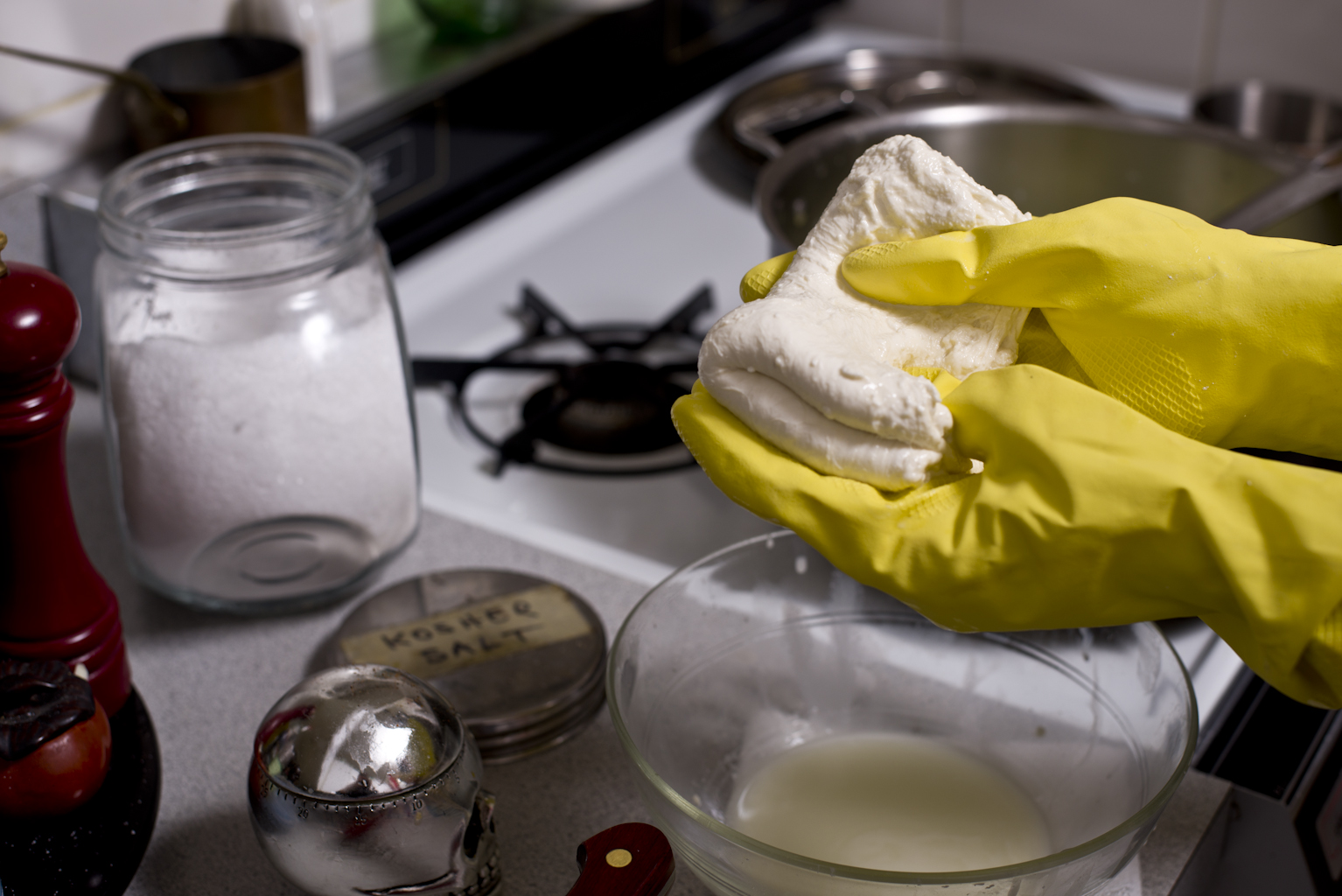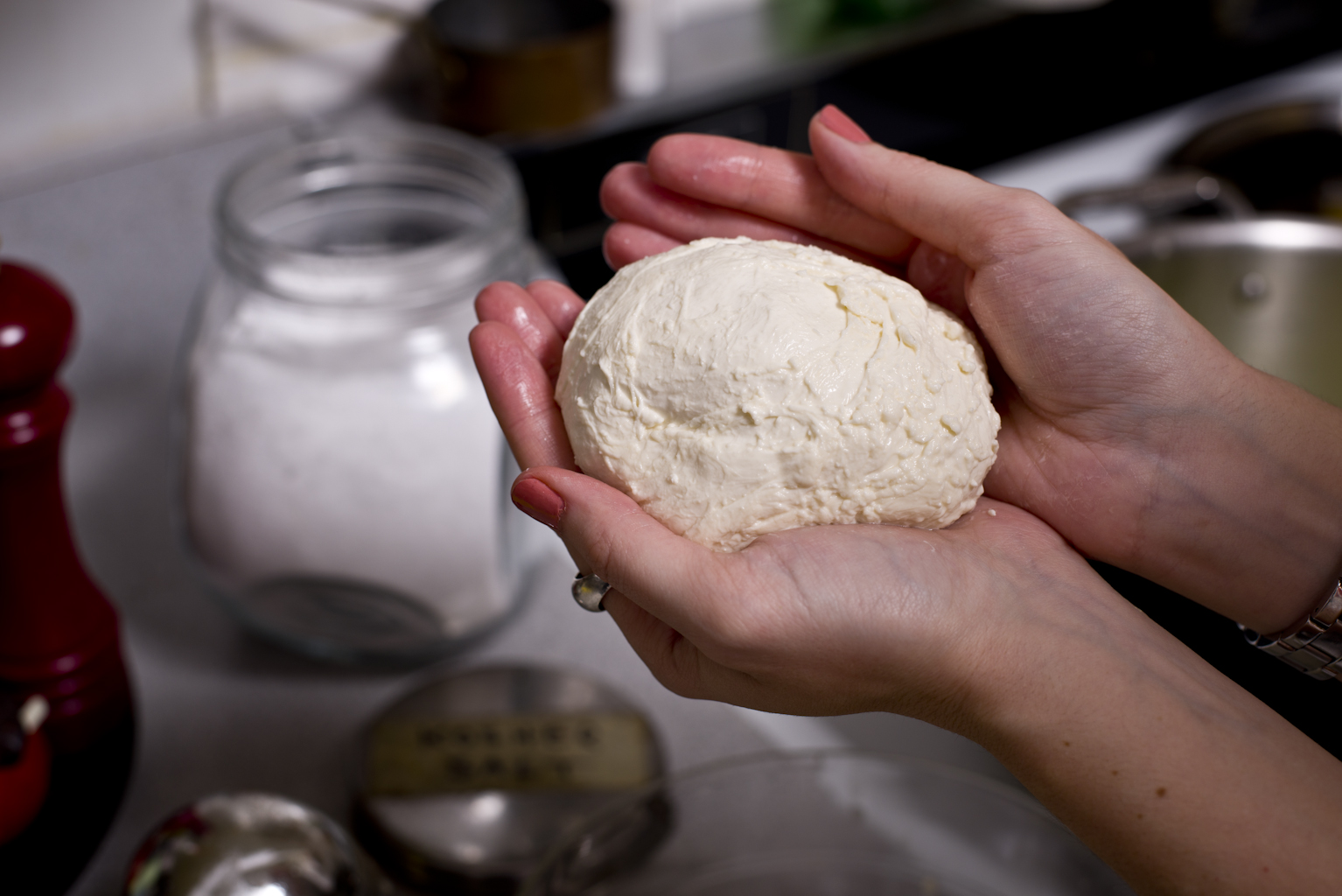How To Make Homemade Mozzarella
Making cheese from scratch, like homemade mozzarella, is kind of like downloading music legally or calling your mom every week. You know it's the right thing to do, but it just seems so haaaaard.
Enter this foolproof recipe for homemade mozzarella. It requires no complicated equipment or aging process — and produces perfect, creamy results in less than an hour. Stop paying $8 a piece for shrink-wrapped mediocrity, and channel your inner fromagier in 10 easy steps. And, hey, maybe call Mom every once in a while, OK? She misses you.
Related: Sausage And Kale Pasta Bake Recipe | How To Make Italian Meat Pie
Here's what you'll need:
*These cheese-making essentials sound Island of Doctor Moreau–style bonkers, but they're surprisingly all-natural. Find them at specialty spice shops, or order online from Kalustyan's.
(Click on photos to enlarge or view as slide show.)
Heat the milk
Pour milk into a large, heavy pot over medium-high heat. Add the citric acid/water mixture, and stir gently until milk reaches 90 F.
Start the curds
Remove from heat, and add the rennet/water mixture. Stir lightly for 30 seconds, then cover the pot and let sit, undisturbed, for 10 minutes.
Check your curds
After 10 minutes, the milk should have set into a porous, semi-solid mass. You want the curds to separate from the liquid whey, which has a slightly yellow tinge.
Cut the curds
Once your curds have set, use a sharp knife to reach into the pot and cut them into a chessboard of evenly sized pieces. Make sure your knife gets all the way through to the bottom of the pot.
Stir it up
Put the pot with its whey and grid of curds back on the burner over medium heat. Warm them to 105 F, stirring gently with a slotted spoon. You want to create enough movement in your pot that the contents heat evenly, but try to avoid breaking up the curds with your spoon. When you reach 105 F, remove the pot from the heat and continue to carefully stir for 5 minutes.
Separate the curds from the whey
After 5 minutes, use your slotted spoon to gently lift the curds into a large, microwave-safe bowl, draining the whey as you go. If you find you have lots of extra whey in the bowl you can tilt it out, but don't worry if there's a small amount of liquid surrounding the curds. You'll get to that later.
Start your microwave
Cook the bowl of curds in the microwave for one minute, then remove and drain excess whey, using your slotted spoon to preserve the curds in the bowl.
Begin folding the curds
Don your rubber gloves to start lightly folding the curds over themselves two or three times. They'll be soft and fairly liquid-y. Using your thermometer, check their internal temperature. If you've reached 135 F, you're ready for the next step. But, depending on your microwave, you might not get to 135 F on the first try. Continue to zap them in 30-second intervals until you reach 135 F.
9. Salt and fold
Sprinkle the salt evenly over the curds, which at this point will look like gelatinous cottage cheese. Get your gloves back on, and massage the salt into the curds. Then, use both hands to stretch the curds out, then fold them back into themselves, for 3-5 minutes. When the curds start to feel slightly firmer, can be stretched further, and take on a somewhat glossy sheen.
Get in shape
Take off your rubber gloves and use your hands to form the mozzarella into one large ball, or several bite-sized bocconcini. What's important here is not to overwork the mozzarella, since you want it to be soft and silky when it's time to mangia.
Read more how-tos on Food Republic:


